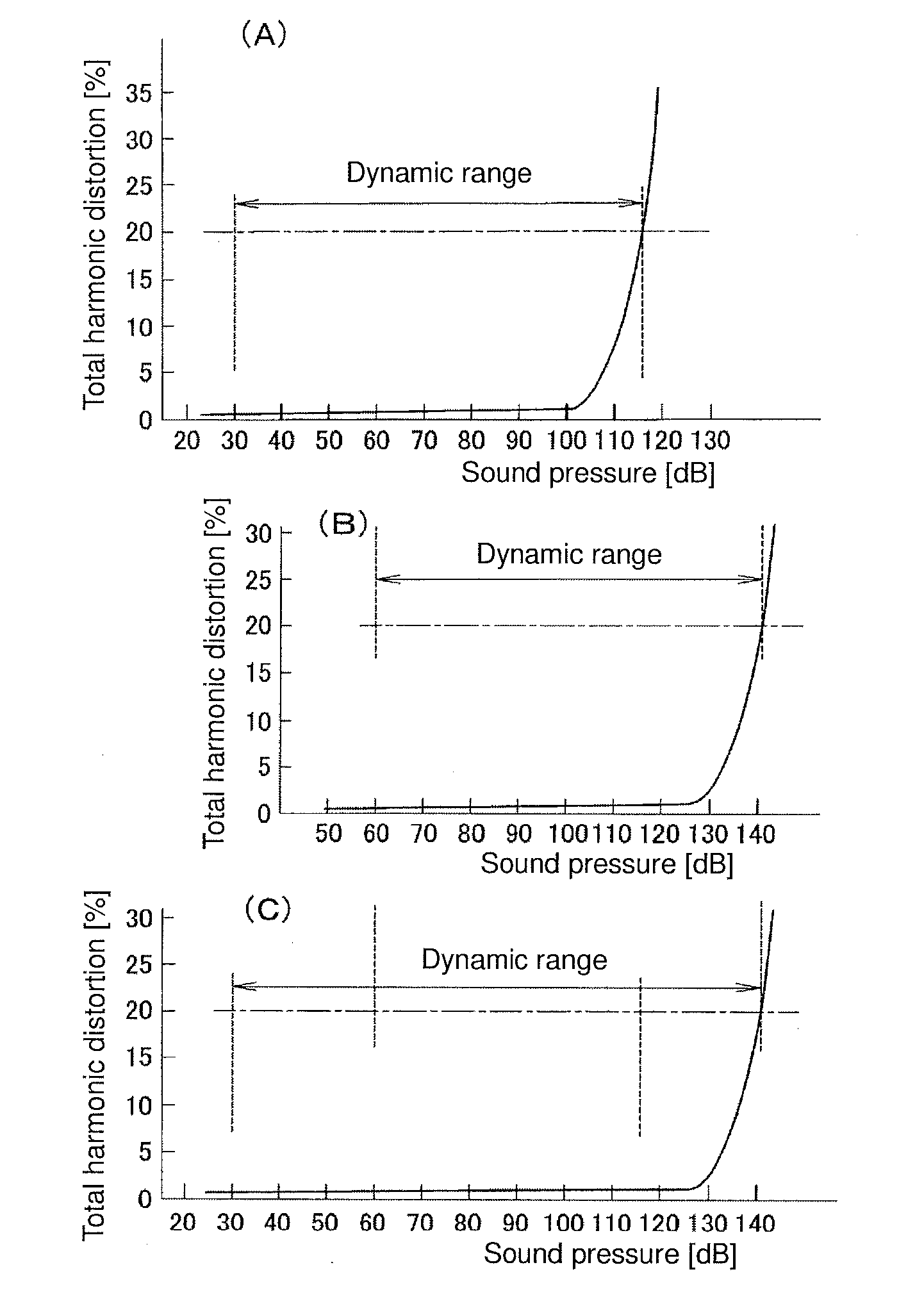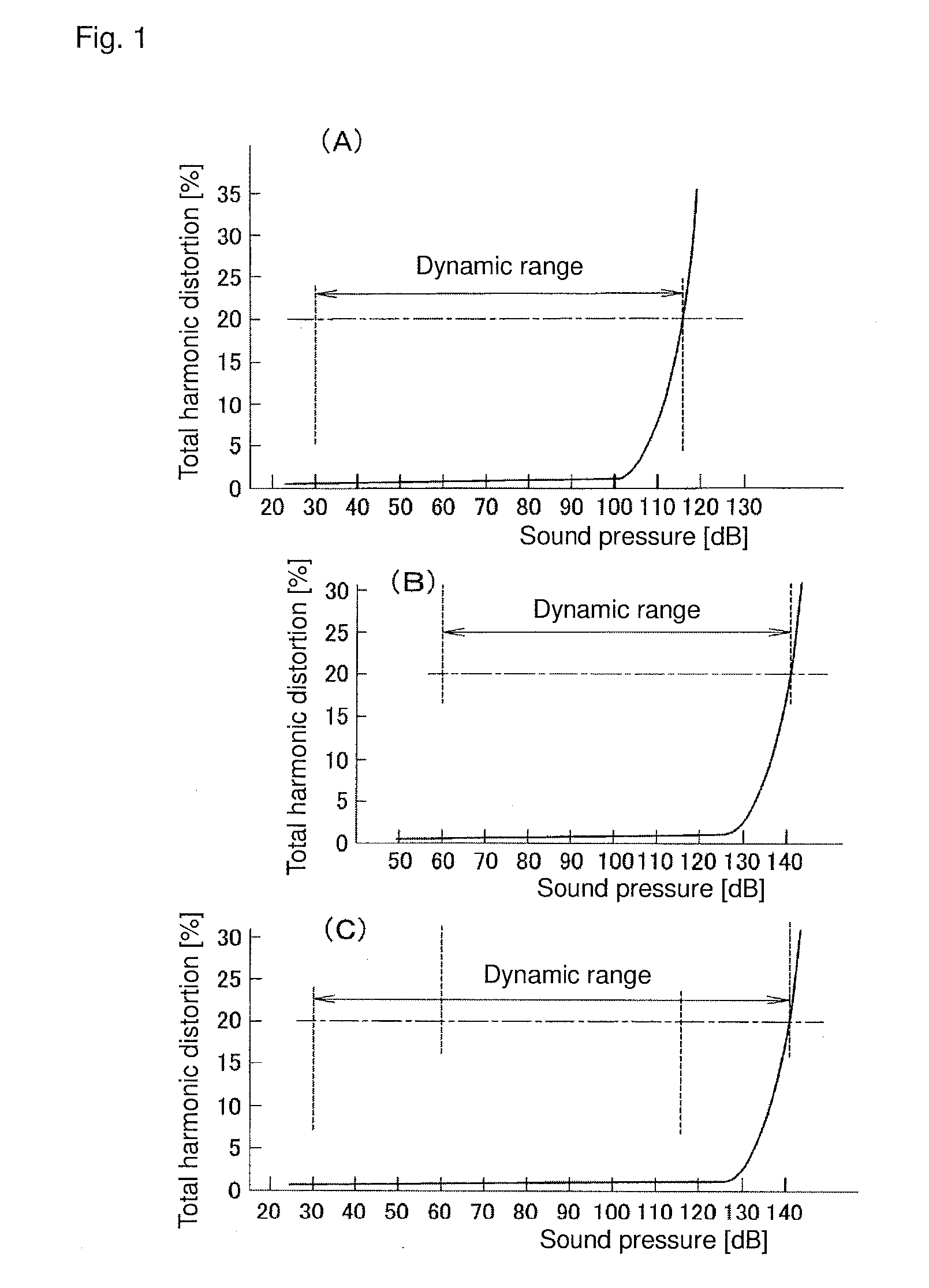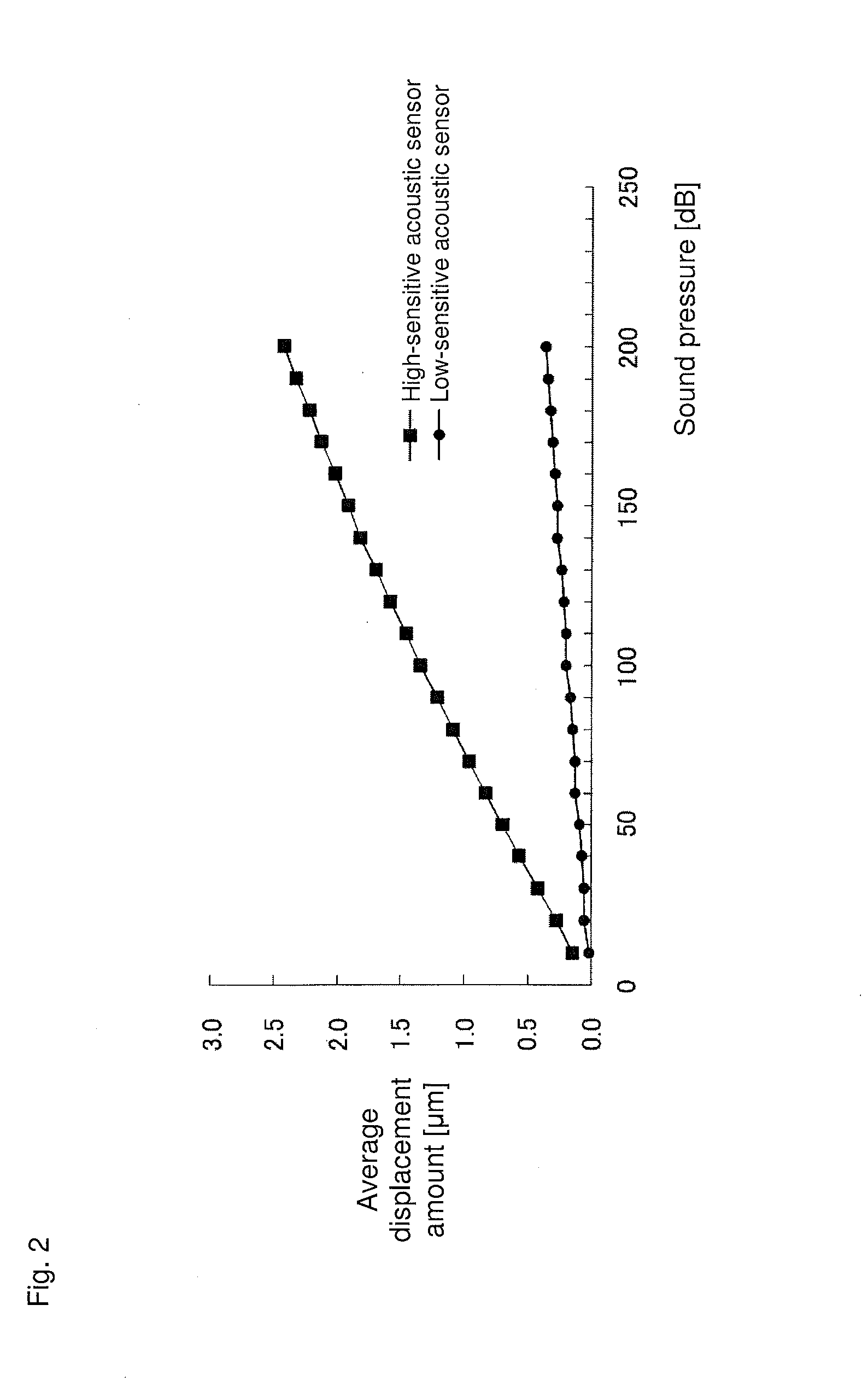Capacitance sensor, acoustic sensor, and microphone
a technology of capacitive sensors and acoustic sensors, applied in the direction of semiconductor electrostatic transducers, mouthpiece/microphone attachments, microphone structural associations, etc., can solve the problems of weakness of condenser microphones, reduced size, inferior to mems microphones, etc., to prevent the dynamic range of acoustic sensors from being narrowed, vibration and harmonic distortion. , to achieve the effect of reducing the dynamic range of acoustic sensors
- Summary
- Abstract
- Description
- Claims
- Application Information
AI Technical Summary
Benefits of technology
Problems solved by technology
Method used
Image
Examples
first embodiment
Modification of First Embodiment
[0107]FIGS. 21A, 21B, 22A, and 22B show various modes of the slit 34. FIG. 21A shows a case in which the nearly straight slit 34 is formed to avoid the acoustic holes 24. According to this mode, the slit 34 can be formed while the acoustic holes 24 are maintained in a conventional arrangement. FIG. 21B shows a case in which the straight slit 34 is formed by using the acoustic holes 24. According to the mode, an area for arranging the slit 34 can be saved to achieve space saving. FIG. 22A shows a case in which the zigzag slit 34 is formed by using the acoustic holes 24. According to the mode, an area for arranging the slit 34 can be saved to achieve space saving. FIG. 22B shows a case in which the plurality of inclined slits 34 are sectionally formed by using the acoustic holes 24. According to this mode, while the rigidity of the back plate 18 near the slit 34 is maintained, interference caused between the acoustic sensing units 23a and 23b by vibrati...
second embodiment
[0108]FIG. 23 is a plan view of an acoustic sensor 61 according to a second embodiment of the present invention. FIG. 24A is a plan view showing the fixed electrode plate 19 of the acoustic sensor 61. FIG. 24B is a plan view showing the diaphragms 13a and 13b of the acoustic sensor 61.
[0109]In the acoustic sensor 61 according to the second embodiment, as shown in FIG. 24B, the diaphragm 13 is completely divided by the slit 17 into two regions, i.e., the first diaphragm 13a and the second diaphragm 13b. On the other hand, as shown in FIG. 24A, the first fixed electrode plate 19a and the second fixed electrode plate 19b are integrally connected to each other by a connection unit 62. In the connection unit 62 between the back plate 18 and the fixed electrode plate 19, as shown in FIG. 23 and FIG. 24A, the slit 34 having a length smaller than the width of the connection unit 62 is formed. The other structure is the same as that in the first embodiment of the present invention, and a des...
third embodiment
Modification of Third Embodiment
[0115]FIG. 26A is a plan view of an acoustic sensor 75 according to a modification of the third embodiment of the present invention. FIG. 26B is a plan view showing the fixed electrode plates 19a and 19b and the diaphragm 13 in the acoustic sensor 75.
[0116]In the acoustic sensor 71 according to the third embodiment, the back plate 18a and the back plate 18b are partially connected to each other, and the slit 34 is formed in a nearly annular shape. For this reason, the internal back plate 18a may be unstably supported by the back plate 18b because the back plate 18a is cantilevered by the back plate 18b.
[0117]In this case, as shown in FIG. 26A, the short slits 34 may be intermittently formed in the back plate 18 to support the back plate 18a at arbitrary intervals.
[0118]The back plate 18a and the back plate 18b may be connected to each other at 2 to 4 positions.
[0119]FIG. 27A is a plan view of an acoustic sensor 76 according to another modification of...
PUM
 Login to View More
Login to View More Abstract
Description
Claims
Application Information
 Login to View More
Login to View More - R&D
- Intellectual Property
- Life Sciences
- Materials
- Tech Scout
- Unparalleled Data Quality
- Higher Quality Content
- 60% Fewer Hallucinations
Browse by: Latest US Patents, China's latest patents, Technical Efficacy Thesaurus, Application Domain, Technology Topic, Popular Technical Reports.
© 2025 PatSnap. All rights reserved.Legal|Privacy policy|Modern Slavery Act Transparency Statement|Sitemap|About US| Contact US: help@patsnap.com



